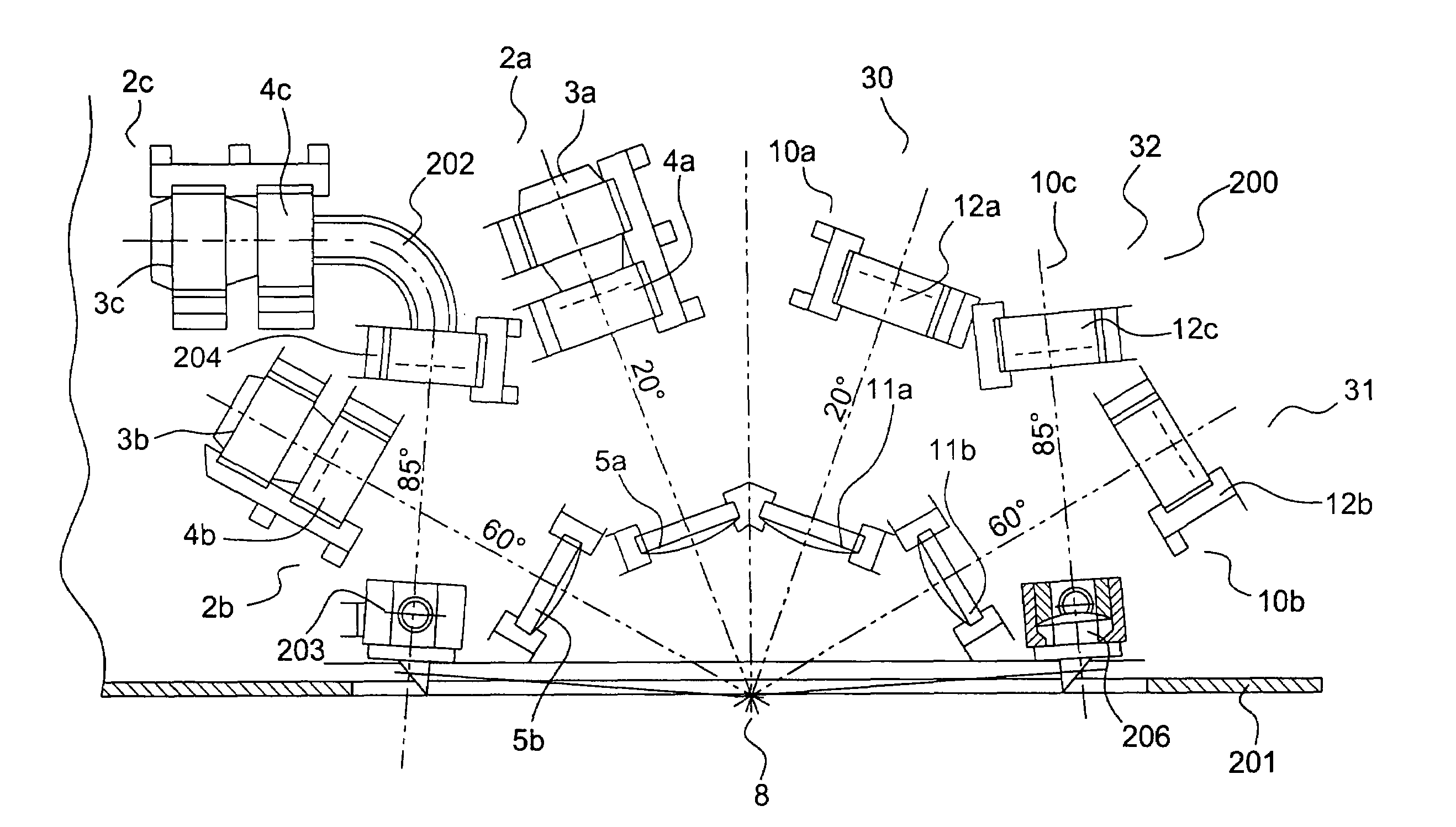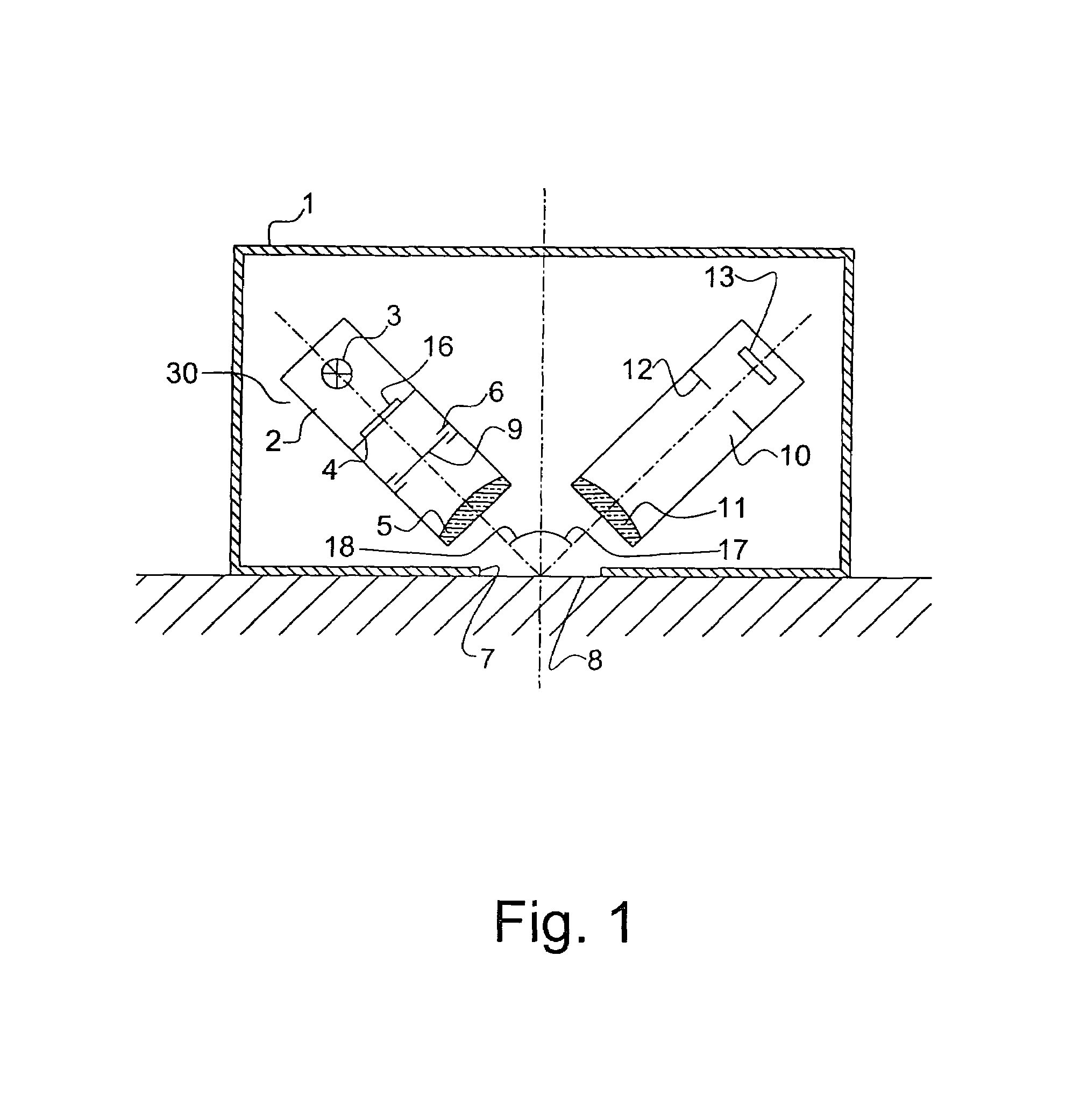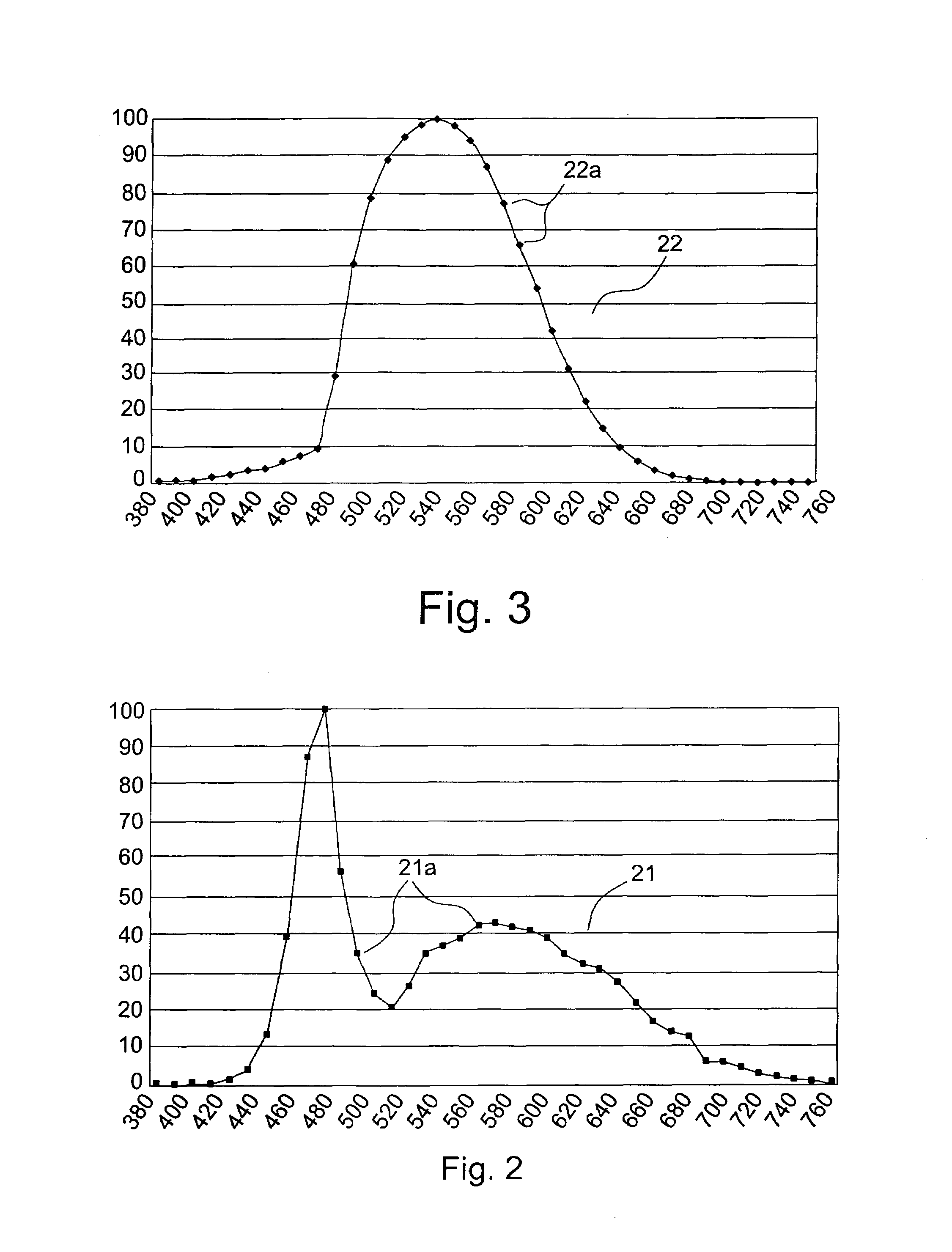Device and method for the determination of the quality of surfaces
a technology of surface quality and device, which is applied in the direction of material analysis, instrumentation, spectral investigation, etc., can solve the problems of only being able to correct the spectral distribution caused by deposits on the inside of the glass body of the light bulb, affecting affecting the quality of the surface. , to achieve the effect of improving the reproducibility and precision of surface quality measurement, reducing cycle duration, and increasing the frequency of measuremen
- Summary
- Abstract
- Description
- Claims
- Application Information
AI Technical Summary
Benefits of technology
Problems solved by technology
Method used
Image
Examples
first embodiment
[0113]the present invention will now be described with reference to FIGS. 1-5.
[0114]The measuring device for determining the quality of surfaces represented sectionally in FIG. 1 has a housing 1 with an opening 7 provided therein. The device is placed with opening 7 on measurement surface 8. A first optical system 30 is arranged within the device which comprises a first optical means 2 and a second optical means 10.
[0115]The optical axes of both optical means 2, 10 are arranged at angles 17, 18 to the vertical of measurement surface 8. In this embodiment, angles 17, 18 have been selected to be symmetrical and amount to 45°. As a variation of the device, and especially for gloss measurements, an angle of 60° is preferred.
[0116]In first optical means 2, a light source 3 is disposed which is configured as a light diode and its emitted spectrum essentially exhibits intensity throughout the entire visible range.
[0117]The light radiated from light diode 3 impinges upon scatter disk 16, wh...
PUM
| Property | Measurement | Unit |
|---|---|---|
| reflection angles | aaaaa | aaaaa |
| reflection angles | aaaaa | aaaaa |
| reflection angles | aaaaa | aaaaa |
Abstract
Description
Claims
Application Information
 Login to View More
Login to View More - R&D
- Intellectual Property
- Life Sciences
- Materials
- Tech Scout
- Unparalleled Data Quality
- Higher Quality Content
- 60% Fewer Hallucinations
Browse by: Latest US Patents, China's latest patents, Technical Efficacy Thesaurus, Application Domain, Technology Topic, Popular Technical Reports.
© 2025 PatSnap. All rights reserved.Legal|Privacy policy|Modern Slavery Act Transparency Statement|Sitemap|About US| Contact US: help@patsnap.com



